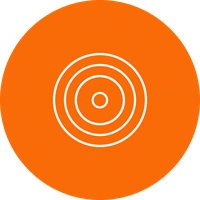
ITEA Impact story
AMALTHEA

From individual approaches to a widely accepted open platform



Impact highlights
- Robert Bosch’s internal tooling for embedded multi-core is based on the AMALTHEA model as a central component.
- Some of the well-known automotive OEM and TIER1 customers of Timing-Architects Embedded Systems GmbH (now part of Vector Informatik) have set AMALTHEA as the internal Group standard for modelling the dynamic software architecture of ECUs.
- BMW, Daimler, Volkswagen and PSA use the format and the APP4MC platform in cooperation with their tool vendors and tier suppliers.
- Volkswagen/Audi and Continental published the article “Shared SW development in multi-core automotive context” (ERTS2016, http://web1.see.asso.fr/erts2016/uploads/pdf/erts_2016_Proceedings.pdf) in which AMALTHEA was promoted as a collaboration model between OEM and TIER-1.
- Community building is ongoing via the Eclipse Open Source network. This has led to a healthy community and a three-month release cycle to keep the software and data model up to date. Users worldwide downloaded each release several hundred times.
- Due to its open nature, universities are able to use APP4MC successfully in teaching. E.g. FH Dortmund organised several APP4MC-focused summer schools. Several Master and PhD theses were conducted in the context of APP4MC at FH Dortmund, Fraunhofer IEM, University of Gothenburg and Paderborn University. The project also enabled about 60 students to use their expertise in the industry. Some 8 students involved in the project were directly hired by industry companies to ramp up and enhance their know-how in multi- and many-core performance and work in close cooperation with the Eclipse APP4MC developer team.
The ITEA 2 projects AMALTHEA and AMALTHEA4public are part of a 'string of pearls' in the automotive domain;
successes that have pushed this domain into the next phase of its development. AUTOSAR, a result from the
former ITEA project EAST-EEA, defined a methodology for component-based development of automotive software
and a standardised software architecture for automotive electronic control units. However, AUTOSAR offered
only limited support for detailed behaviour descriptions, which are indispensable for developing much more
complex multi-core systems of high quality. Those require an increased exchange between tools. Multi-core
optimisation especially relies on additional information like detailed timing behaviour. AMALTHEA set about
adapting existing development methods and tools and creating a common model that offers the required
description capabilities on different abstraction levels. The follow-up project AMALTHEA4public was set up
to foster the transfer into application and to create a sustainable open (“public”) platform and a vibrant
community of users and contributors.
Project results
One of the major achievements of the AMALTHEA consortium was a common meta-model for multi-core software and hardware modelling that enables integration of heterogeneous tools in a custom tool chain to gain easy and efficient access to the overall characteristic of a multi-core system. The AMALTHEA platform is distributed under the Eclipse open source license (EPL) and allows efficient data exchange between different cooperating companies but also between different (new and/or existing) tools used by a single organisation. The AMALTHEA model was taken to a next level by the AMALTHEA4public consortium by adding additional features like verification and test generation as well as traceability of requirements.
In 2015 the AMALTHEA4public framework was moved to the newly created open source project Eclipse APP4MC, an open tool platform for modelling, analysis and optimisation of embedded multi- and many-core software (www.eclipse.org/app4mc/). APP4MC was created by AMALTHEA4public project participants Robert Bosch GmbH, itemis AG, Timing Architects Embedded Systems GmbH, Dortmund University of Applied Sciences and Arts and Eclipse Foundation Europe GmbH. In 2016 a second Eclipse project Capra (www.eclipse.org/capra/) was created. It contains the traceability management tools mainly contributed by the Swedish AMALTHEA4public partners.
Exploitation
AMALTHEA4pubic partners AVL, BHTC and Bosch demonstrated the applicability of the project’s results in industry in several projects incorporating different companies. The AMALTHEA data model or platform is currently in use with some major automotive vendors from several countries around the world.
Robert Bosch uses the consolidated model as input for tools (commercial and in-house) and to exchange timing information with customers. Bosch intends to publish some tools as open source to further support the APP4MC platform. The source code analysis tool “SCA2AMALTHEA” was the first contribution of that kind in August 2017.
For Timing-Architects Embedded Systems GmbH (now part of Vector Informatik), AMALTHEA is the ideal format solution for many of its customers working with software modelling for real-time analysis. The Eclipse Framework APP4MC offers AMALTHEA users an easy start and supports the first steps on the path of introducing model-based timing analysis with well-developed and maintained basic functions, such as Import/Export APIs.
With the help of the AMALTHEA format, real-world benchmarks are available and the exchange between research and industry is alive and ongoing. A fundamental cooperation between academic and industry has been built to master the upcoming performance challenges within the new EE architectures. Thereby, the AMALTHEA and AMALTHEA4public projects contribute to the training of future specialists and managers.
AMALTHEA and its successor projects have shown how an idea for a narrow application (timing analysis of multi-core automotive and telecom systems at some companies) has become an extensive application in many core systems for the most diverse applications in a big number of companies.
More information
Download AMALTHEA impact storyRelated projects
AMALTHEAAMALTHEA4public
Organisations
BHTC (Germany)Dortmund University of Applied Sciences and Arts (…
Itemis (Germany)
Robert Bosch GmbH (Germany)
Timing Architects (Germany)
University of Paderborn (Germany)

